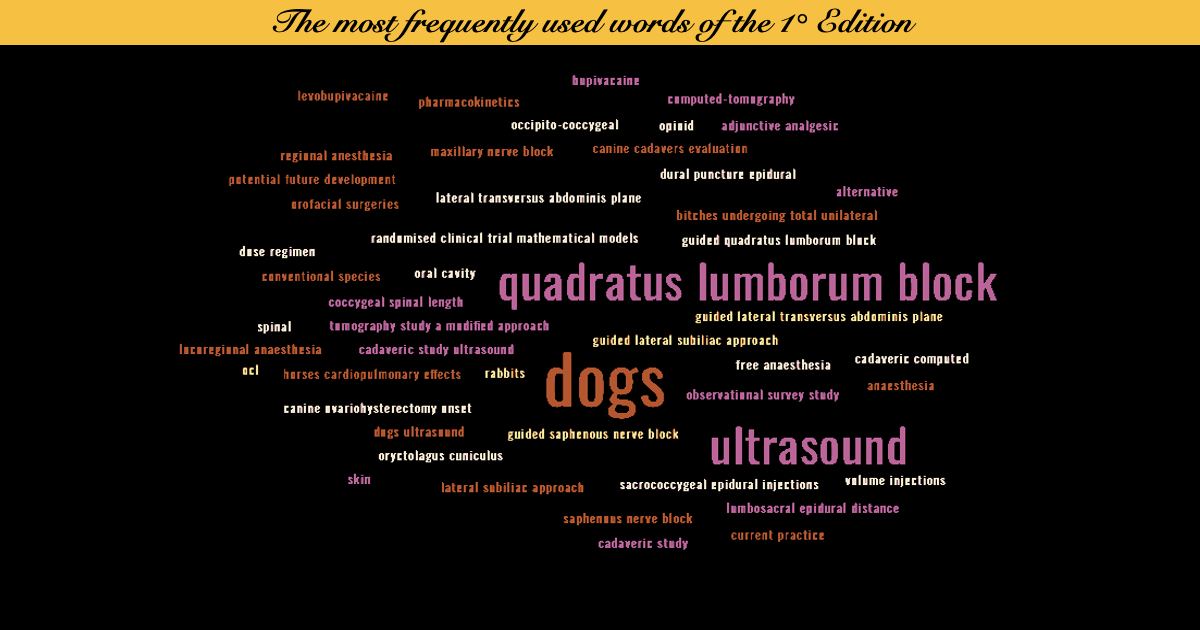Second Edition: Loco-Regional Anaesthesia in Veterinary Medicine
A special issue of Animals (ISSN 2076-2615). This special issue belongs to the section "Veterinary Clinical Studies".
Deadline for manuscript submissions: closed (25 October 2024) | Viewed by 14792

Special Issue Editors
Interests: veterinary medicine education and clinical practice; pain recognition and management; opioid-free anesthesia; ultrasound-guided locoregional anesthesia; anesthetic complications; patient safety; anesthesia equipment performance; mechanical ventilation in veterinary patients
Special Issues, Collections and Topics in MDPI journals
Interests: loco-regional anaesthesia; sepsis; emergency medicine; ventilation; pain
Special Issues, Collections and Topics in MDPI journals
Special Issue Information
Dear Colleagues,
We are pleased to announce the Second Edition of the Special Issue "Loco-Regional Anaesthesia in Veterinary Medicine".
Following the resounding success of the First Edition, we are seeking further submissions of cutting-edge research articles on loco-regional anaesthesia in veterinary medicine.
One of the main responsibilities of anaesthetists is to facilitate the management of any pain/nociception that the patient may experience during hospitalization, and to possibly extend this benefit beyond the immediate postoperative period.
In this context, there is a growing appreciation for the critical role that loco-regional anaesthesia can play in multimodal anaesthetic strategy. This is especially relevant given the current focus on reducing or eliminating unnecessary peri‐operative opioid administration, improving postoperative pain relief, and enabling early discharge after surgery.
Advances in pharmacology, electronics and imaging techniques, and the perineural catheter-based continuous infusion of local anaesthetic have motivated research activity in relation to loco-regional anaesthesia and encouraged its use in daily medicine within veterinary practice settings. Loco-regional anaesthesia techniques should play a role within present and future veterinary anaesthetist educational programs.
This Special Issue will present recent research, case reports, and reviews on loco-regional anaesthesia in small, large, and non-conventional animals, with a particular focus on methodology, clinical application, and novel techniques.
We look forward to your contributions on the important issues within loco-regional anaesthesia.
Dr. Hamaseh Tayari
Dr. Angela Briganti
Guest Editors
Manuscript Submission Information
Manuscripts should be submitted online at www.mdpi.com by registering and logging in to this website. Once you are registered, click here to go to the submission form. Manuscripts can be submitted until the deadline. All submissions that pass pre-check are peer-reviewed. Accepted papers will be published continuously in the journal (as soon as accepted) and will be listed together on the special issue website. Research articles, review articles as well as short communications are invited. For planned papers, a title and short abstract (about 250 words) can be sent to the Editorial Office for assessment.
Submitted manuscripts should not have been published previously, nor be under consideration for publication elsewhere (except conference proceedings papers). All manuscripts are thoroughly refereed through a single-blind peer-review process. A guide for authors and other relevant information for submission of manuscripts is available on the Instructions for Authors page. Animals is an international peer-reviewed open access semimonthly journal published by MDPI.
Please visit the Instructions for Authors page before submitting a manuscript. The Article Processing Charge (APC) for publication in this open access journal is 2400 CHF (Swiss Francs). Submitted papers should be well formatted and use good English. Authors may use MDPI's English editing service prior to publication or during author revisions.
Keywords
- dog
- cat
- large animal
- non-conventional pet
- local anaesthetic
- ultrasound
- needle
- adjuvant
- nerve blocks
- regional anaesthesia
- perineural catheter
Benefits of Publishing in a Special Issue
- Ease of navigation: Grouping papers by topic helps scholars navigate broad scope journals more efficiently.
- Greater discoverability: Special Issues support the reach and impact of scientific research. Articles in Special Issues are more discoverable and cited more frequently.
- Expansion of research network: Special Issues facilitate connections among authors, fostering scientific collaborations.
- External promotion: Articles in Special Issues are often promoted through the journal's social media, increasing their visibility.
- Reprint: MDPI Books provides the opportunity to republish successful Special Issues in book format, both online and in print.
Further information on MDPI's Special Issue policies can be found here.
Related Special Issue
- Loco-Regional Anaesthesia in Veterinary Medicine in Animals (13 articles)







